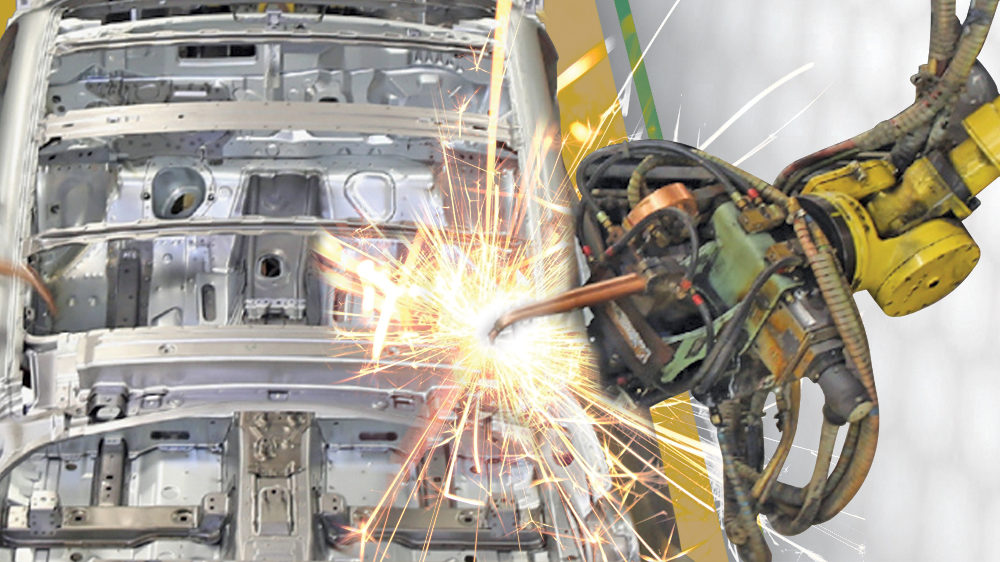Robotic welding: The dawn of a new era
By OEM Update Editorial October 26, 2016 8:43 am IST
Welding has become a widespread application of robotics, right from car welding to production. Here, we take a look at the advancement in robot welding when it comes to precision manufacturing.
On a broader scale, welding is one process that includes the fusion of two materials through heating, intermixing and then cooling. We are not new to welding and welding techniques. The techniques are centuries old and are constantly evolving. This constant evolving process has given rise to robotic welding and has become increasingly relevant with the industries that are into manufacturing.
Those days when we had the welding process done at the behest of humans are on the verge of passing. Most of the welding had to be done in the hard to reach areas. With the increasing usage of robotic welding, the manufacturing companies have become proficient as it has not just solved the issue of difficult welds, but robotic welding has also increased the standard of welding also making it stronger, reducing the defects.
When asked about the advantages of using robots in welding, Nitin Kakade, Director, Fine Automation Robotics (I) Pvt. Ltd says, “The process is deskilled. The consistency is achieved for the end product. The cycle time automatically reduces. The quality is improved as there is no manual intervention.”
For Dewang Kapadia, CEO, Cloos India Welding Technology Private Limited, robotic welding plays a crucial role in the area of arc welding. Speaking about the advantages in robotic welding when it comes to arc welding, he says, “Robotic arc welding is a more consistent process throughout the welding length and provide impeccable repeatability, providing higher quality welds. Robots can also save workers from health hazards by limiting exposure to fumes and decreasing risk of arc burn. Robot welding decreases cycle times and enhances efficiency. The return on investment (ROI) is worth every rupee spent on an arc welding robot.”
Sanjay Kulkarni, Managing Director, Pilz India says, “There are many reasons for automating welding processes which provide many benefits, including faster, consistent cycle times, no break in production, and ensuring the safety during the hazardous welding process. The robot weld ensures increase in productivity as they move faster than the humans and have consistent cycle time.”
“Other advantages are better quality and accuracy which is the result of consistent motion of the welding gun as it moves with same speed every time a part is being welded. Above all, welding is a very risky process which involves flash, fumes and sparks. With robotic welding, you will protect workers and reduce insurance and accident related costs considerably.”
The current trends in the robotic automation sector are concentrated on the manufacture of the products at a very high production level at relatively lower costs. However, further research in this area is going on to bring out more positive changes in the welding sector. As said earlier, welding is one such area that meets development every day since its discovery.
“Two wheel, four wheel industry uses robot for smallest of fabrication which they are doing. Even people are using the robots for welding for locomotive components, aerospace. Nowadays, to avoid dependency on skilled labour where ever there is fabrication people utilize automation”, Kakade speaks about the scope of robots in welding.
With the scope of robotic welding not restricted to these areas, there are also other segments where there is a visible scope for robotic welding. Picking up on those lines, Kapadia adds, “Arc welding is one such area where there is lots of scope for robotic welding. Arc Welding Robots are being used in India extensively in welding of sub-assemblies for Automotive, earth moving machines, cranes, forklifts, defence tanks, railway bogies, electrical boxes from Stainless Steel, pressure vessels, etc. It also finds application in welding of PEB structures, aircraft components, etc. Robotic Arc welding is very popular when serial production is envisaged for limited series of components to be produced in batches periodically.”
Pilz lauds the use of robots in welding. Kulkarni says, “Welding robots find immense scope in Automotive industry, metal industry, electrical and electronic industry. They ensure higher productivity, efficiency, repeatability and reliability. Along with these, they ensure protection of the work force from the hot surfaces in welding.”
Cookie Consent
We use cookies to personalize your experience. By continuing to visit this website you agree to our Terms & Conditions, Privacy Policy and Cookie Policy.


















